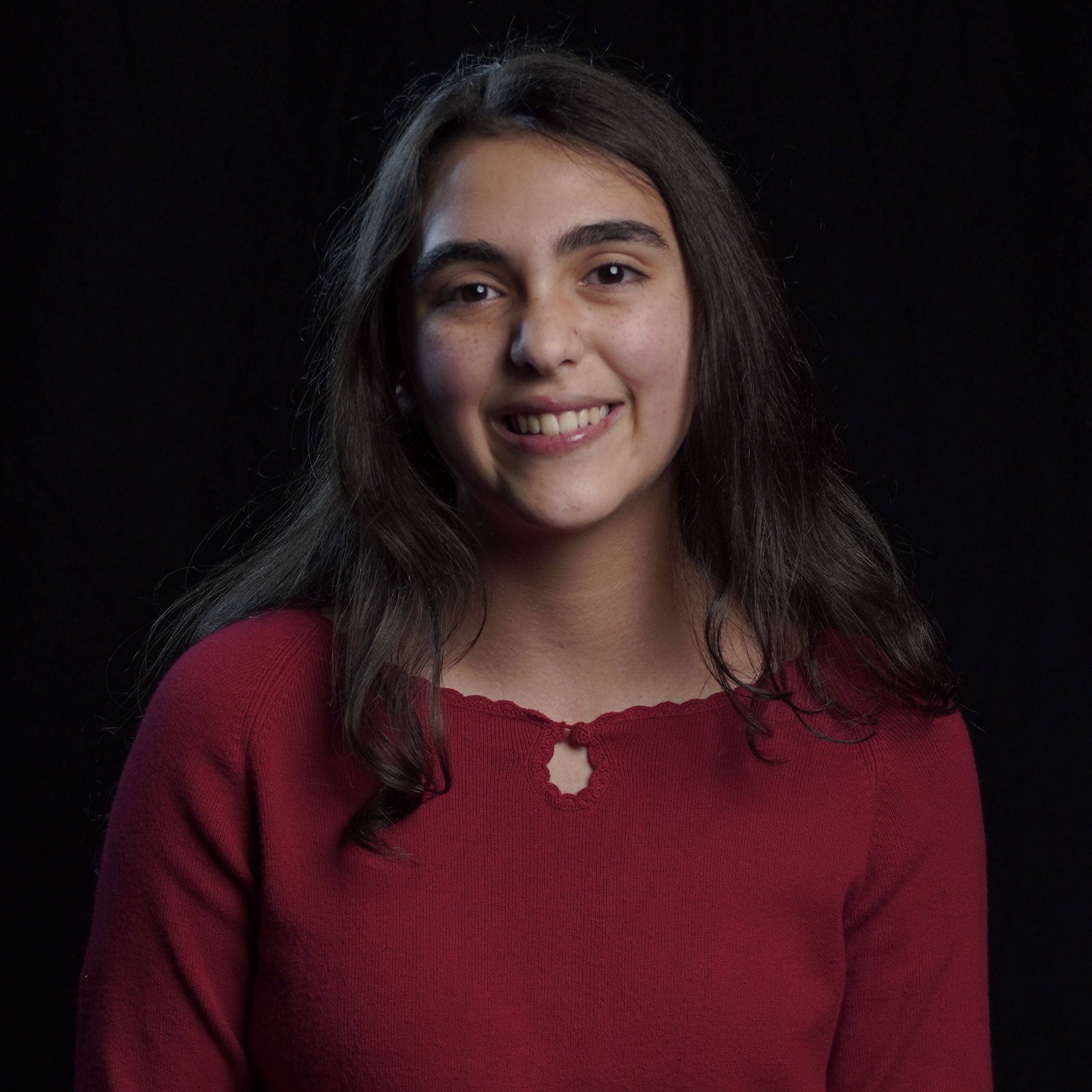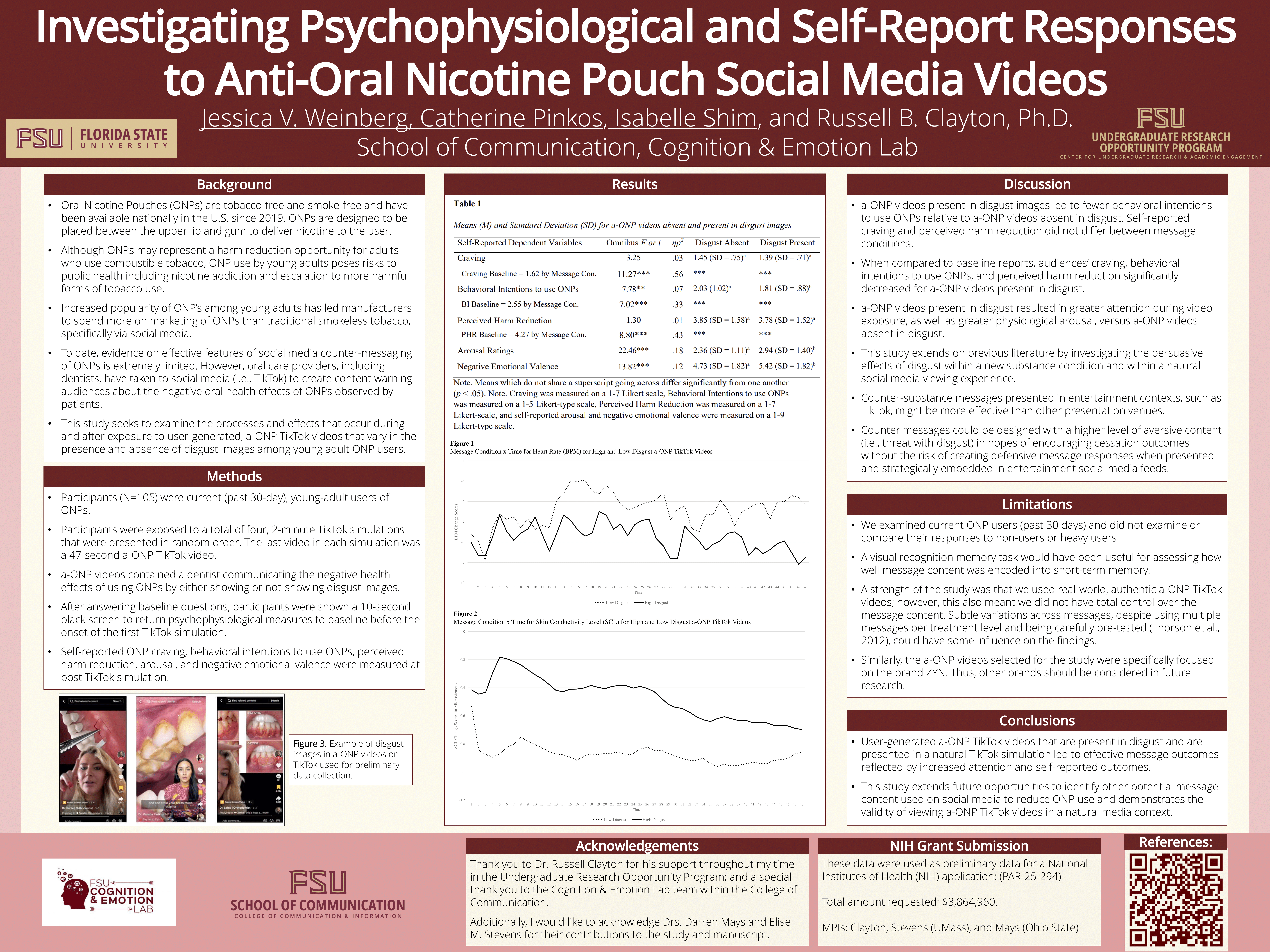Research Symposium
25th annual Undergraduate Research Symposium, April 1, 2025
Jessica Weinberg Poster Session 4: 3:00 pm - 4:00 pm/ Poster #142

BIO
Jessica Weinberg is a second-year student from Delray Beach, Florida, pursuing a dual degree in Media/Communication Studies and Percussion Performance, accompanied by a minor in Psychology. She has been playing classical percussion since the third grade, and is interested in media psychology and media effects with a specific focus on music's impact on behavior and emotion. As a UROP student, Jessica joined Dr. Russell Clayton’s Cognition and Emotion Lab team this past fall. There, she studied how oral nicotine pouch users cognitively and emotionally respond to user-generated anti-oral nicotine pouch TikTok videos. She is excited to work in the Cognition and Emotion Lab throughout her time at FSU. After graduating in the Spring of 2027, Jessica plans on attending graduate school and looks forward to combining her passions for music and communications within her future career.
Investigating Psychophysiological and Self-Report Responses to Anti-Oral Nicotine Pouch Social Media Videos
Authors: Jessica Weinberg, Russell ClaytonStudent Major: Media/Communication Studies and Percussion Performance
Mentor: Russell Clayton
Mentor's Department: Communication Mentor's College: College of Communication & Information Co-Presenters: Catherine Pinkos and Isabelle Shim
Abstract
Objective: This study examines young adult oral nicotine pouch (ONP) users’ cognitive and emotional responses to user-generated anti-oral nicotine pouch (a-ONP) TikTok videos varying in the presence and absence of disgust images.
Methods: One hundred and two young adult ONP users were exposed to a TikTok simulation that contained user-generated a-ONP TikTok videos. Participants’ psychophysiological responses were recorded while participants viewed the TikTok simulations. Self-reported craving, behavioral intentions to use ONPs, perceived harm reduction, arousal, and negative emotional valence were measured at baseline and post TikTok simulation exposure.
Results: In support of the negativity bias hypothesis, the psychophysiological data indicated that the presence of disgust images led to increased negative emotion valence, arousal, and greater second-by-second attention to the a-ONP TikTok videos versus those absent in disgust images. Self-reported outcomes revealed a decrease in behavioral intentions to use ONPs for a-ONP TikTok videos present in disgust versus those absent in disgust. Craving, behavioral intentions to use ONPs, and perceived harm reduction of ONPs decreased after exposure to a-ONP TikTok videos present in disgust when compared to participants’ baseline reports.
Discussion: User-generated a-ONP TikTok videos that are present in disgust and are presented in a natural TikTok simulation led to effective message outcomes reflected by increased attention and self-reported outcomes. This study extends future opportunities to identify other potential message content used on social media to reduce ONP use and demonstrates the validity of viewing a-ONP TikTok videos in a natural media context.
Keywords: Psychophysiology, Cognitive and Emotional processing, Social Media, Oral Nicotine Pouches


